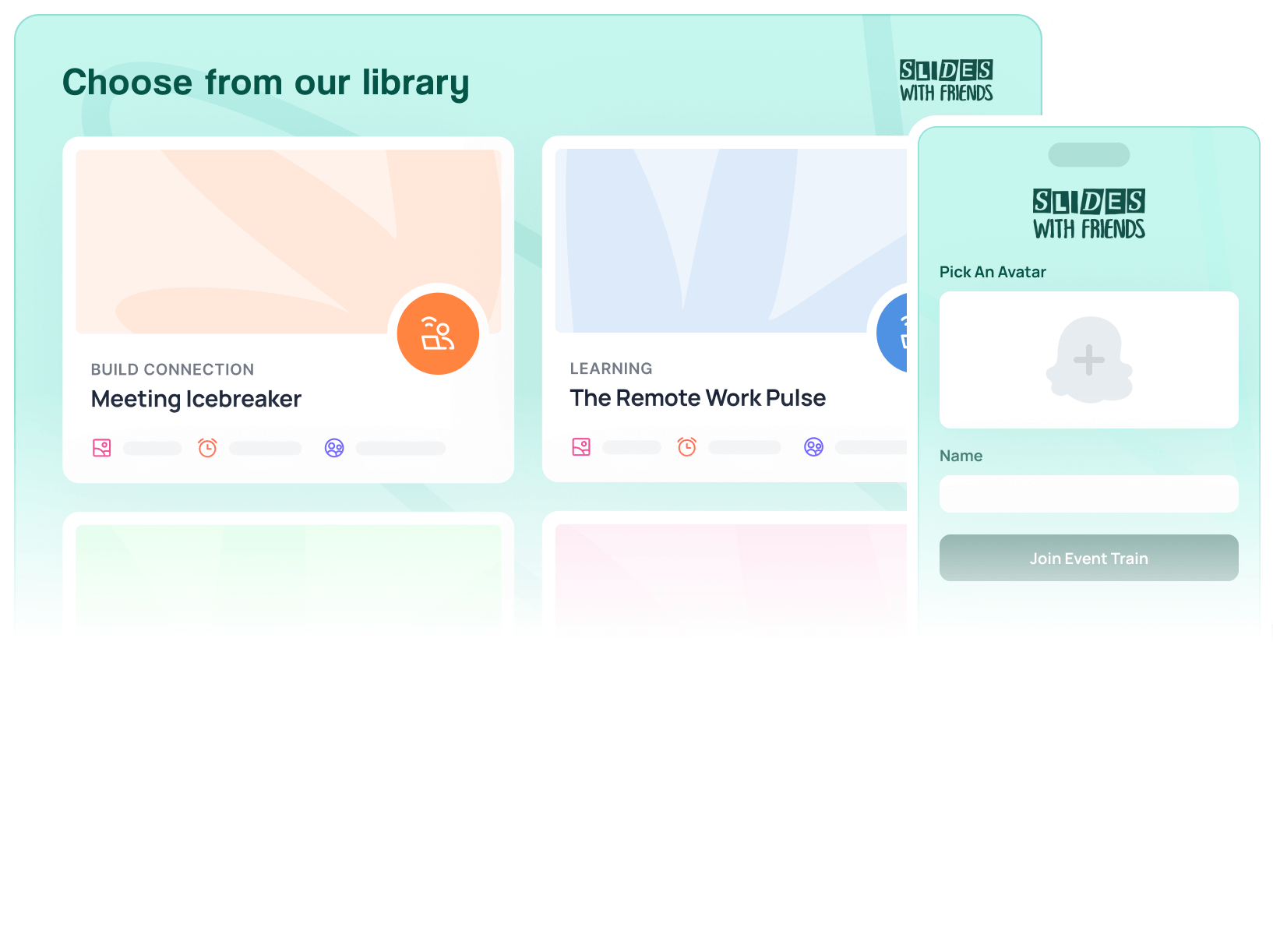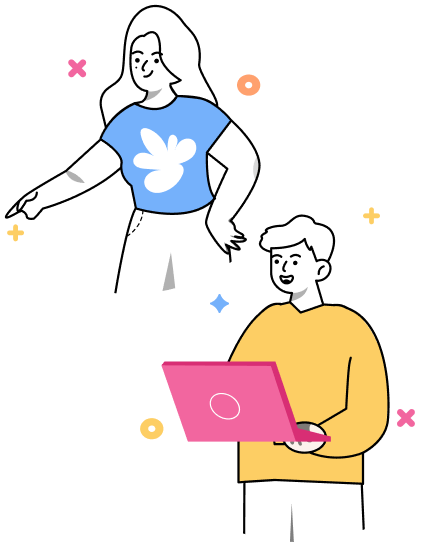The 12 Most Important Employee Onboarding Best Practices
Proper onboarding makes your new hires more productive faster while reducing turnover. Read the 12 best onboarding practices you can implement today.

Onboarding is the process of integrating new hires into your company’s workflow.
People come from all backgrounds and experiences. Roles might be similar across companies, but each company does things in its own way. New hires must get used to a new productive process, culture,and administrative tasks. That’s what onboarding aims to do.
Two factors make onboarding a key component of any organization looking for employees:
- Hiring a new employee costs $4,683 on average, according to a study by The Society for Human Resource Management (SHRM). And the price grows with the new hire’s salary.
- Organizations with strong onboarding processes increase new hire retention by 82% and improve productivity by 70%, as research by the Brandon Hall Group uncovered.
Numbers like these make a convincing case for onboarding. Yet, Gallup found in 2018 that only 12% of employees thought their employers were doing a good job of it.
That’s why we’ve interviewed HR veterans and managers to learn the best employee onboarding practices. In this article, you will learn how to ease your new hires into their role, from the day they sign the contract until they become an integral part of your organization.
Before the First Work Day
Your new working relationship begins right after your new hire signs the contract. Some companies wait until the day the person officially starts working. But that’s inefficient for the company and irritating for the hire. Drowning in paperwork is the last thing any person wants to do. Even less so when they were excited to start a new work life.
First impressions matter, as they give your work relationship a good start.
Establish a standard onboarding process
What does a successful onboarding process look like to you? Create a clear outline of your expectations. Start with a checklist of what you want to achieve with the process, and what KPIs you will track.
Then, prepare all necessary documents and materials for the new hire. These include training materials and paperwork. That way, they can read the docs on their time, rather than rushing through them on their first day at work.
Also, make sure to give new hires a point of contact where they can ask questions about the job. Clear communication is crucial in the workplace — so much that, as Pumble reports, 86% of employees and executive cite lack o communication as the main cause of workplace failures.
The next step is to make the process smooth for both you and your new hires.
Minimize the bureaucratic burden
Most people dislike dealing with bureaucracy. It’s often frustrating and overwhelming. But you can make it easier for your new employees to deal with the paperwork.
Here’s how:
- Streamline paperwork and administrative tasks: Merge the paperwork into a centralized digital hub. That way, the employee can consult it whenever and wherever they want.
- Use digital platforms for document signing and processing: Tools like digital signatures and online portals simplify document handling, reducing administrative overhead.
- Provide guidance and support for navigating administrative procedures: Assign a dedicated coordinator or point of contact to assist new hires with administrative tasks.
- Automate repetitive tasks: Use onboarding software to automate onboarding workflows and notifications.
Shrinking the paper beast improve the onboarding experience. Coming up next is bending the process to fit each employee’s needs.
Tailor onboarding to individual needs
Each employee comes with a unique background and preferences. And with a few steps you can make them feel value and supported.
You can set the stage for long-term success by tailoring the experience for the new hire.
It starts with a pre-onboarding survey. What you’re looking for is insights into new hires’ backgrounds, preferences, and expectations. This information helps create a specific path to integrate them in your organization.
Your new employee comes with a distinctive set of skills and learning preferences. That’s why you should create custom training materials and resources that suit them. Providing relevant and targeted training ensures that new hires receive the support they need to thrive in their roles.
Recognize that new hires may have personal commitments or obligations outside of work. Offer them a flexible onboarding schedule to show you care about their well-being. Changing jobs is hard enough without having to deal with an annoying manager.
Enlist the help of your team members to support the new hire. Mentors offer valuable insights, answer questions, and assist new employees as they navigate their roles and integrate into the company culture.
Communicate expectations clearly
Clear communication is the cornerstone of a successful onboarding process. Give the new hire access to open lines of communications, and be ready to answer their doubts.
Give your new employees a roadmap for success in the company utline job responsibilities, performance expectations, and goals to help them visualize their success. That way, employees know what you expect from them, and can work towards achieving their objectives.
Next, keep communicating throughout the onboarding process. Regular communication helps new employees feel supported andc onnected to their team and the organization as a whole.
Last, set up feedback mechanisms. Use them to gather input on the onboarding experience and adjust as needed. New hires can offer insights on your process, and suggest potential improvements. Adjust your process with the feedback you gathered, and you’ll soon find yourself with a solid process.
The First Two Weeks
The first two weeks are an exciting time for a new hire. It’s when they actually get to know their coworkers. It’s when they start interacting with your company’s culture. And it’s when they begin to acclimate to the rhythms and dynamics of their new workplace.
These initial weeks offer a window of opportunity to immerse new hires in the company’s ethos, values, and daily operations. It’s a period of exploration and adaptation, where they navigate their roles, establish relationships, and absorb the nuances of the organizational culture.
Here’s how to tackle them. ### Ensure a warm welcome Give your new employees a warm welcome to make them feel like they’ve made the right choice.
Start by personally greeting new hires or assigning a manager to do so. A warm handshake, friendly smile, and brief introduction will go a long way in making them feel valued and appreciated from the moment they arrive.
For in-office hires, provide a guided tour of the office space. Familiarizing them with their surroundings helps ease any nerves and allows them to feel more comfortable in their new environment. If you’ve hired a remote worker, organize an introductory call to welcome them to the team.
But you can go beyond a basic welcome. For example, you could organize a few team game sessions that engage the new hire. Research suggests that team games are a practical method for developing and improving newly formed teams. It’s a quick and easy way for the employeeto get to know their new coworkers.
Short on ideas? Play a virtual icebreaker with Slides WithFriends, here are two starter decks:
You can adapt the deck to your organization with our editor in a few clicks. Then, you can run the event that people can join on their phone or PC by sharing the event code or the QR code.
These icebreakers take 15-20 minutes at most, and help ease the new hire into their team.
Facilitate cultural integration
At the core of every company lies a specific culture. Are you pushing boundaries and pioneering industry changes? Or are you more conservative — favoring stability and reliability as the foundation of your operations?
What about your values? Do you champion integrity, honesty, and transparency in all your dealings? Or do you prioritize customer satisfaction above all else, going above and beyond to exceed expectations?
But your culture is also shaped by the people you work with. Your company is a mosaic of diverse backgrounds, perspectives, and experiences. Your job is to help your new employee integrate withtheir teammates and with your company at large.
Host cultural sensitivity training to raise awareness of different cultural norms and perspectives. For a start, you can use this starter deck:
Acting in accordance with your culture strengthens it. Your team members — new and old — should feel like they belong. And to promote belonging, you can host events like celebrations of work anniversaries or well-being check-ins. These events show new hires that you care about your employees, and that you’re serious about your company culture. Here are two decks to get you started:
Fostering cultural integration is not just a goal but a necessity for building a cohesive and inclusive workplace environment where every employee feels valued and respected.·
Provide essential training
Transitioning into a new role can be daunting. But training eases the process and set new hires up for success.
Here are a few key training strategies to consider:
- Offer comprehensive training on company policies, procedures, and compliance requirements. New employees don’t know how your organization operates. That’s why they need guidance on how to submit work, requests, and how to follow safety requirements. Dealing with these subjects now will save management time down the road.
- Conduct role-specific training sessions. Each role in your organization has a specific job. Train your hire on how to best perform their given tasks. And how to deal with common issues in their work. Don’t wait until problems arise, or you risk creating a bottleneck.
- Use interactive training methods. Interactive training improve teaching and retention. Consider incorporating simulations, role-playing exercises, or hands-on activities into your training program. These interactive elements provide opportunities for active participation and skill-building, allowing new hires to apply their knowledge in real-world scenarios.
- Assign mentors or coaches. Mentors offer guidance and know-how to new hires. These mentors know how your organization works, and how to perform in the workplace. They can give tips that only an experienced person could know.
There is no shortage of training tools for your employees. Pick the one that serves your goals best, and use it to offer essential training.
Encourage engagement and feedback
No matter how much time you spend theorizing the ideal onboarding process, you need real-world data. And engagement and feedback can provide the data you need to perfect your onboarding.
Here’s how to promote involvement and gather valuable insights:
- Schedule regular check-ins: Set up regular meetings with new hires to gauge their progress and address any concerns they may have.
- Encourage participation: Encourage new hires to actively participate in team meetings and discussions. Involving them in group activities promotes engagement and integration into the team.
- Solicit feedback: Ask new hires for their feedback on the onboarding process. Listening to their perspectives allows you to identify areas for improvement and make necessary adjustments.
- Implement adjustments: Based on the feedback received, make adjustments to the onboarding process to enhance the experience for future hires.
Continuous improvement ensures that the onboarding process remains effective and relevant.
Third Weekend Beyond
Over one third of companies have a one-week long onboarding process. That means not many reach this stage. Yet, the recommended onboarding length is 90 days. And in many cases, it takes up to one year for an employee to reach peak productivity.
These numbers highlight the importance of keeping the onboarding process going.
Let’s see what you can do from week 3 onward.
Foster continuous learning and development
Did you know that 94%of the employees who would consider quitting do so due to a lack of training? The reason is that they feel stuck in their current role with no career opportunities.
Thus, one of the best practices for employee onboarding is to offer training opportunities to support career growth. Training isn’t an expense; it’s an investment. Investment in people who will improve their skills, delivering better work. Investment in people who will be grateful for the opportunity, staying longer with your company.
Here’s how you can promote continuous learning:
- Encourage participation in workshops, seminars, and online courses relevant to the employee's role
- Offer mentorship programs or coaching sessions to guide professional development
- Recognize and reward employees who show a commitment to learning and improvement.
By following these steps, you offer growth opportunities to your new hires, making them more likely to stay with you for a long time.
Promote collaboration and teamwork
Working well together is key for any successful team. To help new employees fit in, focus on building a sense of teamwork and cooperation from day one. Here’s how:
- Team Projects: Get new hires involved in group projects right away. This lets them see how their skills fit into the bigger picture and how important teamwork is. It also gives them a chance to work closely with others and build relationships.
- Team Meetings: Invite new hires to team meetings from the start. Here, they can share ideas and learn about ongoing projects. This helps them feel included and valued as part of the team.
- Team Building Activities: Plan fun and engaging activities that encourage teamwork. Whether it’s a problem-solving game or a creative group challenge, these activities can break the ice and build trust among team members.
We are convinced that games are the solution to remote team building. That’s why we designed decks to promote fun and camaraderie among team members:
Teamwork creates a positive work environment, where every employee, no matter their seniority, collaborates to reach the company’s goals.
Provide opportunities for growth and advancement
Every new hire hopes to grow and move up in their career. No one wants to feel hopelessly stuck in the same spot for years.
As your new employees settle into their roles, start weaving in more personalized growth opportunities. This means regularly checking in on their career aspirations and offering chances to tackle new challenges that align with their goals. Encourage them to take ownership of their projects, pushing them to step out of their comfort zones. This not only boosts their confidence but also deepens their commitment to their role and the company.
Fostering a culture that celebrates learning and progression send sa clear message: the company invests in its people’s futures. Highlight stories of employees who’ve advanced within the company to illustrate that growth is not just possible but expected. This approach ensures employees see a future with your organization,motivating them to grow and succeed long-term.
Maintain regular feedback and support
We already praised feedback earlier. The same concepts apply to the rest of the new hire’s onboarding journey.
Consistent feedback and support are key to making sure employees feel valued and understand how they can improve. This doesn’t just mean pointing out areas for improvement but also celebrating their successes.
For example, you could host an appreciation day event with Slides With Friends:
Regular one-on-one meetings offer a great chance to check in on how they’re feeling, discuss any challenges they’re facing, and provide guidance on overcoming those hurdles.
Creating an open environment where new hires feel comfortable asking questions and voicing concerns is crucial. It reassures them that the company cares about their progress and well-being. Additionally, offering support beyond work-related issues, such as adjusting to a new city or balancing work and personal life, can significantly enhance their experience and loyalty to the company.
By continuing to provide feedback and support, you help new hires smoothly transition into confident and capable team members.
Conclusion
The journey from a new hire to a fully integrated team member is filled with opportunities for both the employee and the organization. A thoughtful, comprehensive onboarding process lays the foundation for a successful career within the company. It’s about much more than just teaching someone the ropes of their new job. It’s about creating a welcoming environment that supports growth,encourages collaboration, and builds a strong sense of belonging.
Remember, the best onboarding processes are those that evolve. As your company grows and changes, so should the way you welcome new team members. Keep listening to feedback, adapting your strategies,and always looking for ways to improve.
By doing so, you not only enhance the onboarding experience for new hires but also strengthen your organization’s culture and performance. Ultimately, the goal is to ensure that every employee feels valued, supported, and equipped to achieve their full potential from day one and beyond.


Ready to ditch the dull, and run team sessions that people will actually enjoy?
Get started with a Slides with Friends deck in no time. We’ve got all the interactive features you need in one easy-to-learn, easy-to-set-up tool.















